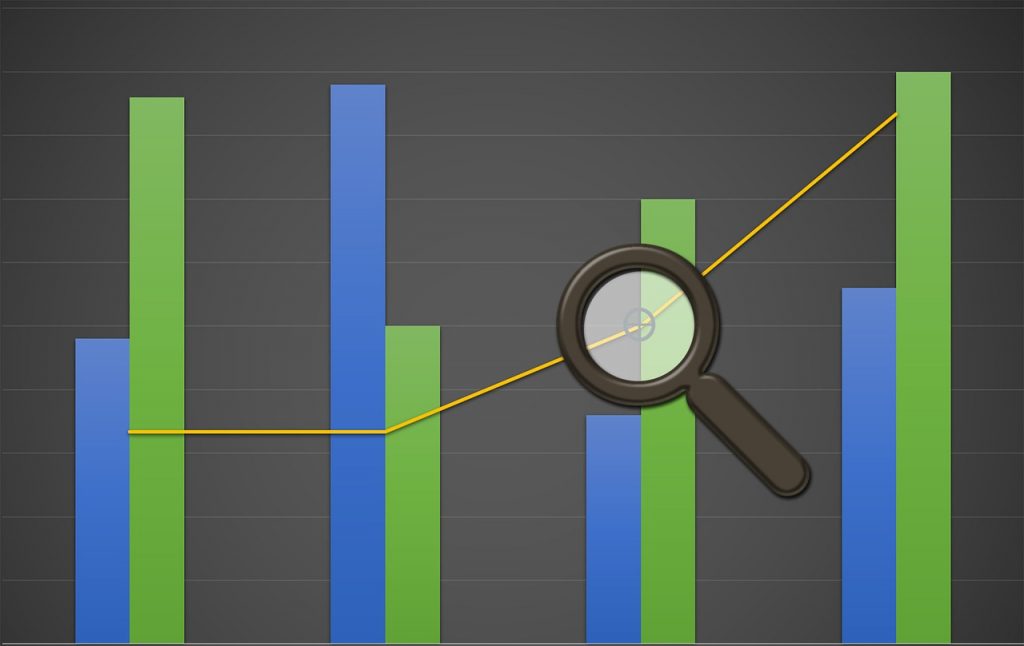Providing Foresight to Turn Fear into Fuel for Future-Proofing Your Business

GUEST POST from Teresa Spangler
As a business leader, it’s crucial to have a futurist vision and navigate the world of extreme consequences with optimism. Maintaining good morale and motivation within the organization can be challenging as worldly events may create fear and anxiety. These issues can compound when navigating through company or organizational traumas.
“Trends are only useful when we look at them through multiple lenses as we gaze across all six time zones. We must think of trends as signposts that can illuminate the conditions we will likely encounter at some point in the future, even if that future is a century away. Or, as we’re about to see, as close as 1.3 light seconds.”
― The Signals Are Talking: Why Today’s Fringe Is Tomorrow’s Mainstream
What strategies could be used to turn fear into fuel and lead through these tough times?
One effective method is through what I call “signal crafting.” Signal crafting involves diving deeply into futuristic scenarios. Crafting both the best-case and the worst-case outcomes is a healthy exercise that provides insights beyond your day-to-day and even your year-to-year planning. Signal crafting exercises help you anticipate future scenarios of global events, giving life, and a 360-degree view of circumstances. In turn, by building out these signaling exercises you are equipping your organization to better plan. Diving even deeper, combining different factors that affect not just your business’s future but humanity’s future, can help leaders envision various potential outcomes and make strategic decisions based on the most likely scenarios. Signal exercises provide a foresight into the future in many cases alleviating fear and turning that fear into fuel.
What are the benefits of signaling in planning for the future?
- Signal crafting is an exercise that helps businesses prepare for the future by creating scenarios based on different factors that affect their industry.
- Companies must focus on attuning to signals of change in the world, including industry trends and emerging technologies, changing consumer behavior, social and cultural shifts, political and regulatory changes, and economic conditions.
- By combining different factors that affect a business’s future, it can envision various potential outcomes and make strategic decisions based on the most likely scenarios.
- The exercise helps businesses identify potential risks and opportunities and develop strategic plans considering different possible outcomes.
- The exercise fosters cross-departmental collaboration and gains multiple perspectives.
- The exercise can be repeated periodically, allowing companies to adapt to new signals of change and remain future-ready planners and strategists.
Signal Crafting Exercise
To reinvent the future, leaders should be attuned to the signals of change in the world. These signals may come from internal and external factors, such as:
- Industry trends and emerging technologies: Businesses should keep a close eye on industry trends and emerging technologies, such as artificial intelligence, blockchain, and automation, that may potentially transform the industry.
- Changing consumer behavior: Businesses should stay abreast of evolving consumer preferences, such as a growing focus on sustainability and ethical practices.
- Social and cultural shifts: Businesses should keep up with social and cultural shifts, such as changes in attitudes towards diversity and inclusion.
- Political and regulatory changes: Businesses should be aware of political and regulatory changes, such as new regulations around carbon emissions and sustainable practices.
- Economic conditions: Businesses should monitor economic conditions and prepare for potential changes in the market, such as recessions or fluctuations in currency.
Here are twenty-five (25) possible signals of change that may impact the world in 2035:
- Climate change: The effects of climate change are expected to become more severe, with more frequent extreme weather events, rising sea levels, and widespread impacts on ecosystems and human societies.
- Artificial Intelligence: The development of advanced artificial intelligence systems will have a transformative impact on many industries, including healthcare, transportation, and manufacturing.
- Automation: The increasing use of automation in manufacturing, agriculture, and other industries is expected to displace many workers, creating significant social and economic challenges.
- Internet of Things: The widespread adoption of connected devices and sensors, known as the Internet of Things, will enable more efficient and data-driven management of everything from supply chains to energy systems.
- Energy transition: The world is moving towards a more sustainable energy mix, with renewable energy sources such as wind and solar becoming increasingly essential and fossil fuels declining.
- Space exploration: Human exploration of space is set to accelerate, with more missions to the moon, Mars, and beyond, as well as the development of commercial space travel.
- 5G and beyond: The rollout of 5G and other advanced communication technologies will enable faster and more reliable connections, leading to new applications in areas such as autonomous vehicles and virtual and augmented reality.
- Quantum computing: The development of quantum computing could enable breakthroughs in cryptography, drug discovery, and climate modeling.
- Synthetic biology: Advances in synthetic biology are expected to lead to new forms of agriculture, medicine, and materials science, as well as ethical and regulatory challenges.
- Nanotechnology: The ability to manipulate materials at the nanoscale could lead to breakthroughs in areas such as energy storage, medicine, and electronics.
- Gene editing: The ability to edit genes could lead to new treatments for genetic diseases and improvements in agriculture, but it also raises ethical and regulatory concerns.
- Virtual and augmented reality: These technologies are expected to transform industries such as gaming, entertainment, education, and healthcare.
- Autonomous vehicles: The development of autonomous vehicles could lead to significant changes in transportation and urban planning, as well as in industries such as logistics and shipping.
- Cybersecurity: As more critical systems connect to the internet, the threat of cyber attacks will become increasingly significant.
- Blockchain: The development of blockchain technology could lead to more secure and efficient financial transactions and new applications in areas such as supply chain management and voting.
- Wearable technology: The widespread adoption of wearable technology, such as smartwatches and fitness trackers, is expected to enable more personalized and data-driven healthcare.
- Bioprinting: The ability to 3D print living tissues and organs could revolutionize medicine and lead to new forms of regenerative therapies.
- Vertical farming: Developing vertical farming techniques could enable more sustainable and efficient food production in urban areas.
- Smart cities: Using sensors and data analytics in urban planning and management is expected to lead to more efficient and livable cities.
- Universal basic income: The idea of providing a guaranteed income to all citizens, regardless of their employment status, is gaining traction as a potential response to the challenges of automation and job displacement.
- Circular economy: The concept of a circular economy, where waste is minimized, and resources are reused and recycled, is gaining momentum as a more sustainable alternative to the traditional linear economy.
- Mental health: The growing awareness of the importance of mental health is expected to lead to new treatments and interventions and changes in social attitudes and policies.
- Aging population: The increasing proportion of older adults in many societies is expected to create new challenges and opportunities in healthcare, housing, and social services.
- Social media: The impact of social media on society is expected to continue to evolve, with potential changes in areas such as politics, privacy, and mental health.
- Biometric authentication: The use of biometric data, such as facial recognition and fingerprint scanning, is expected to become more widespread as a means of authentication in areas such as finance, travel, and security, raising concerns about privacy and security.
- Geoengineering: As the impacts of climate change become more severe, the concept of geoengineering, such as solar radiation management and carbon capture and storage, is gaining attention as a potential solution to mitigate the effects of climate change, but it also raises ethical and environmental concerns.
Start the exercise:
- Focus teams on attuning to signals of change in the world, including industry trends and emerging technologies, changing consumer behavior, social and cultural shifts, political and regulatory changes, and economic conditions.
- Choose a signal of interest: Each team member choose 1 signal ea member
- Details are important:
- Who is affected?
- What are the effects of this change/trend?
- What does it feel like to people?
- How are people interacting?
- How will this impact businesses?
- How will this impact the political environment?
- Go as deep as you can to envision how the world is affected by this signal of change.
- What will you be doing? How will this signal affect your world/life/family?
- Keep going as deep as you can.
- Include how will it impact your company.
- Envision the signal including the details above in the scenario…it’s 10 years from today what happening?
- Write a futuristic story about that signal. Write about two different outcomes 10 years from now.
- Construct a positive outcome.
- Construct worst-case outcome.
- Finally, share your stories both positive and worst-case scenarios. Talk about these and the impacts that each signal may have on your business, on your people, on individuals, environments, governments …etc.
- Write a futuristic story about that signal. Write about two different outcomes 10 years from now.
Company teams can create scenarios based on the categories they choose to work with. The teams can then present their scenarios to other groups, fostering cross-departmental collaboration and gaining multiple perspectives. The exercise can be repeated periodically, allowing companies to adapt to new signals of change and remain future-ready planners and strategists.
By creating a range of scenarios that identify potential risks and opportunities, businesses can develop strategic plans that consider different possible outcomes. This enables the company to be better prepared for the future and proactively prepare for different outcomes instead of reacting to events as they unfold. The approach will ensure you maintain a competitive advantage but moreover, you may experience a calming of fear and anxiety in the organization. So many benefits come from this one exercise but overall is a future-planning exercise to help the organization achieve long-term success.
Image credit: Unsplash
![]() Sign up here to join 17,000+ leaders getting Human-Centered Change & Innovation Weekly delivered to their inbox every week.
Sign up here to join 17,000+ leaders getting Human-Centered Change & Innovation Weekly delivered to their inbox every week.




